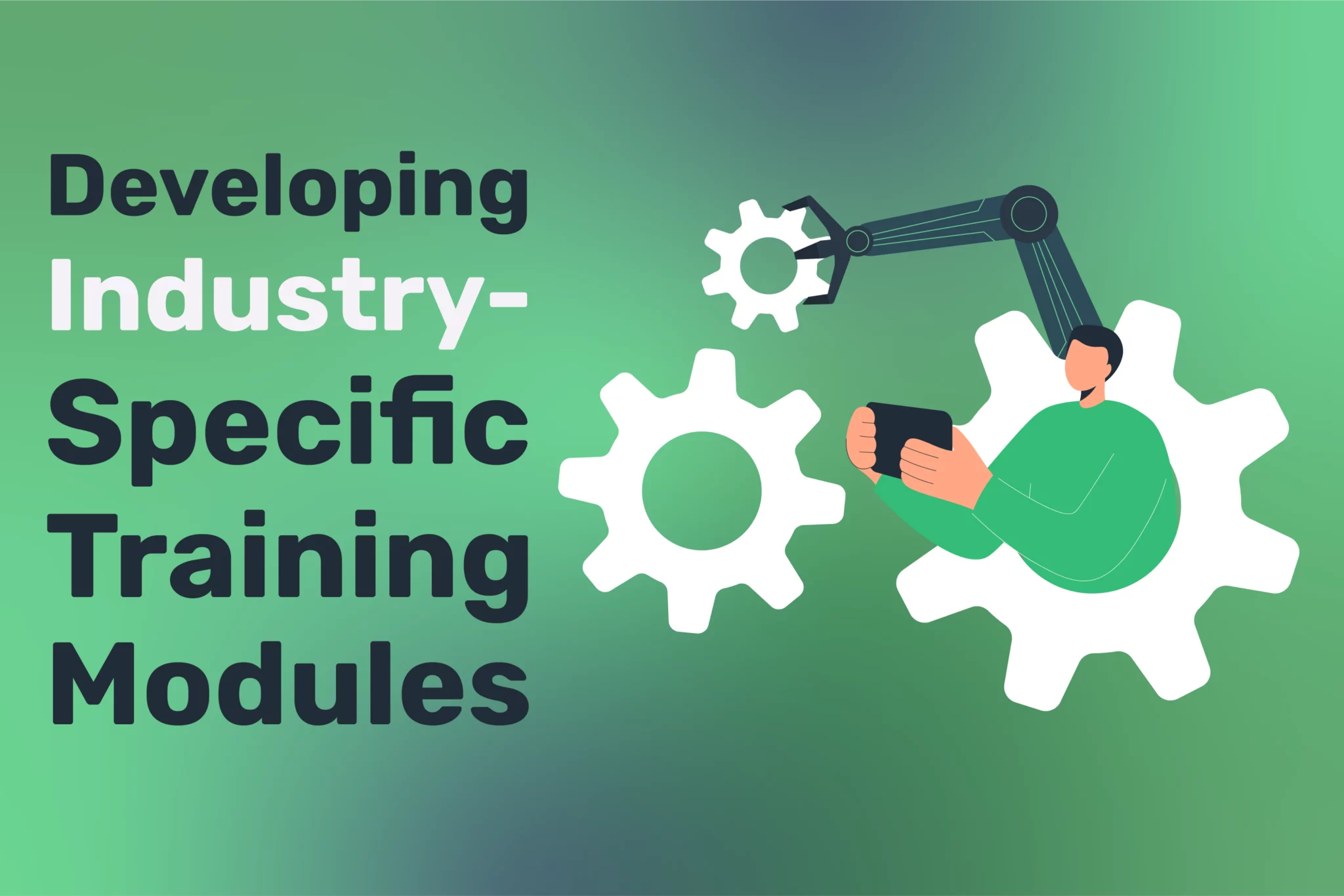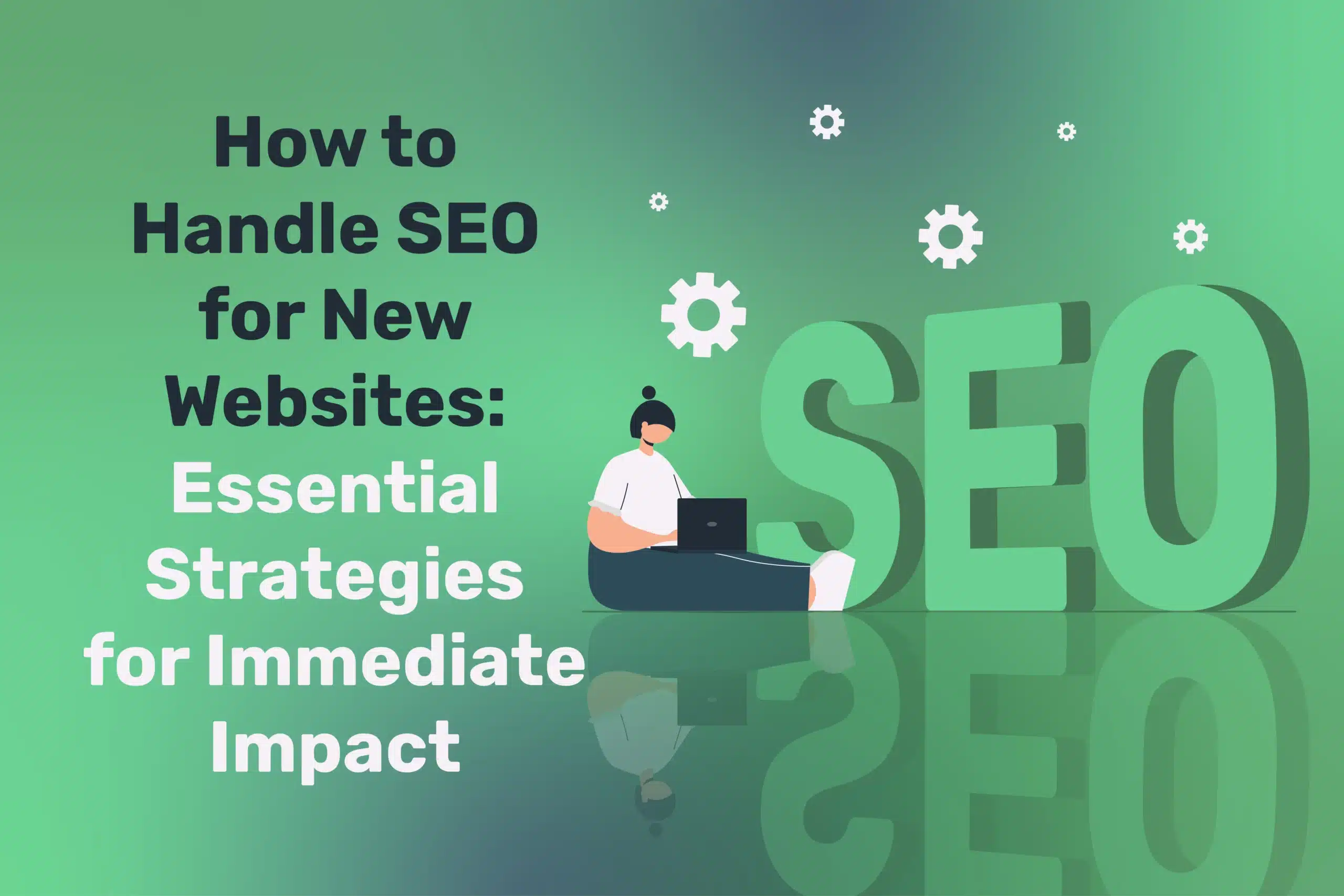
Accelerating the Future: 7 Amazing Trends Revolutionising Digital Customer Experiences
Table of Contents
The digital world continues to evolve at a breakneck pace, with customers often expecting more than brands can realistically deliver. In response, businesses must focus on creating an exceptional digital customer experience to remain competitive and relevant in today’s marketplace. From immersive augmented reality to zero-click search opportunities, the latest design and technology trends are rapidly transforming how people discover, engage with, and stay loyal to their favourite brands. As attention spans shrink and competition grows, a forward-thinking approach that anticipates user needs has become the hallmark of success.
This comprehensive guide explores seven cutting-edge trends shaping the future of digital customer experience, with a special focus on their impact throughout Northern Ireland, Ireland, and the UK. By understanding these emerging developments, businesses can better adapt to surging consumer expectations while reinforcing their position in the modern digital landscape.
Voice Search and Zero-Click SERP Experiences
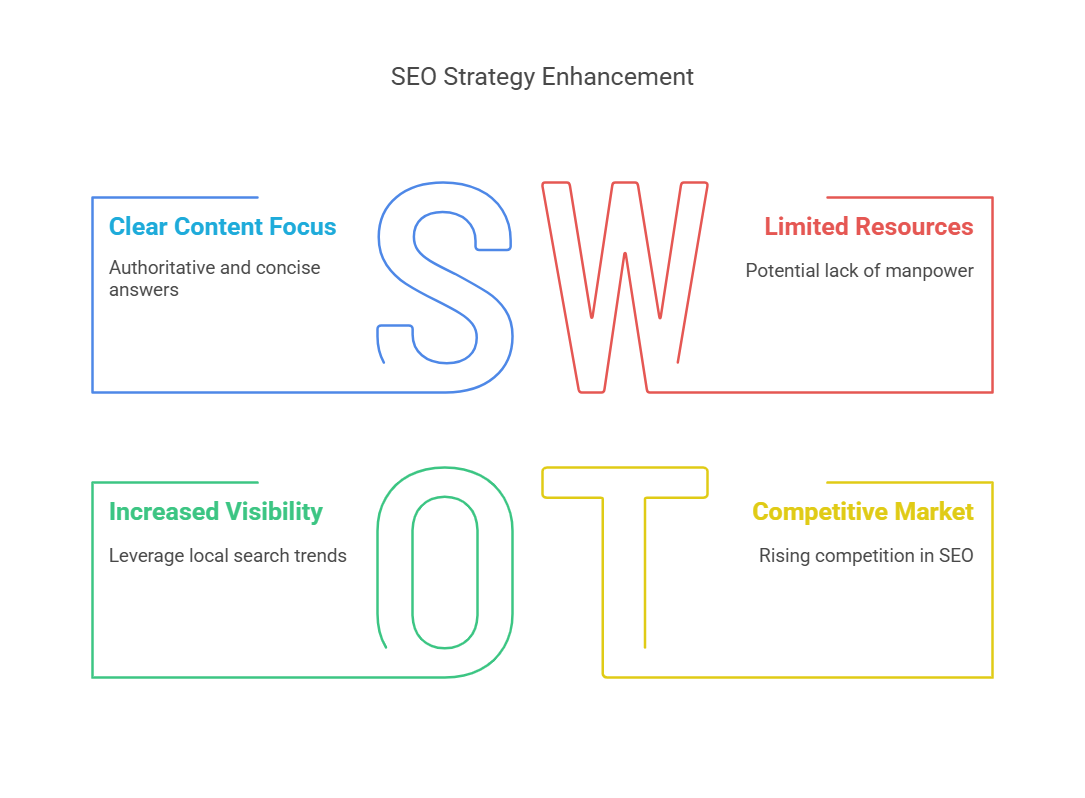
The Rise of Voice-First Interaction
Voice technology is transforming how customers interact with digital content:
- Smart Speaker Proliferation: Over 45% of UK households now own smart speakers, with adoption growing rapidly in Northern Ireland and Ireland
- Mobile Voice Assistance: Voice search on smartphones has become mainstream for on-the-go queries
- Changing Search Behaviour: Users are shifting from typed keywords to conversational questions
- Local Search Importance: Voice searches frequently include “near me” elements critical for regional businesses
- Natural Language Processing: AI improvements have made voice recognition significantly more accurate
“Voice search optimisation has become a critical factor for businesses across Northern Ireland,” notes Ciaran Connolly, Director of ProfileTree. Local businesses that adapt their digital content to answer conversational questions are seeing dramatic improvements in discovery and engagement, particularly for mobile users seeking immediate solutions.
Zero-Click Search Results
Search engines increasingly answer queries directly on the results page:
- Featured Snippets: Concise answers displayed above traditional organic results
- Knowledge Panels: Information boxes providing key details without requiring clicks
- Local Packs: Map-based business listings with essential information displayed
- People Also Ask: Expandable questions providing additional context
- Direct Answers: Immediate responses for factual or straightforward queries
Strategic Implementation for Businesses
Adapt your digital presence to thrive in voice and zero-click environments:
- Structured Data Markup: Implement schema.org markup to help search engines understand and feature your content
- FAQ Content Development: Create content that directly answers common industry questions
- Conversational Keyword Strategy: Optimise for natural language phrases rather than traditional keywords
- Local SEO Enhancement: Ensure complete business listings with accurate Northern Ireland location information
- Concise, Authoritative Content: Craft clear, definitive answers to industry-relevant questions
Immersive Extended Reality (XR) Experiences
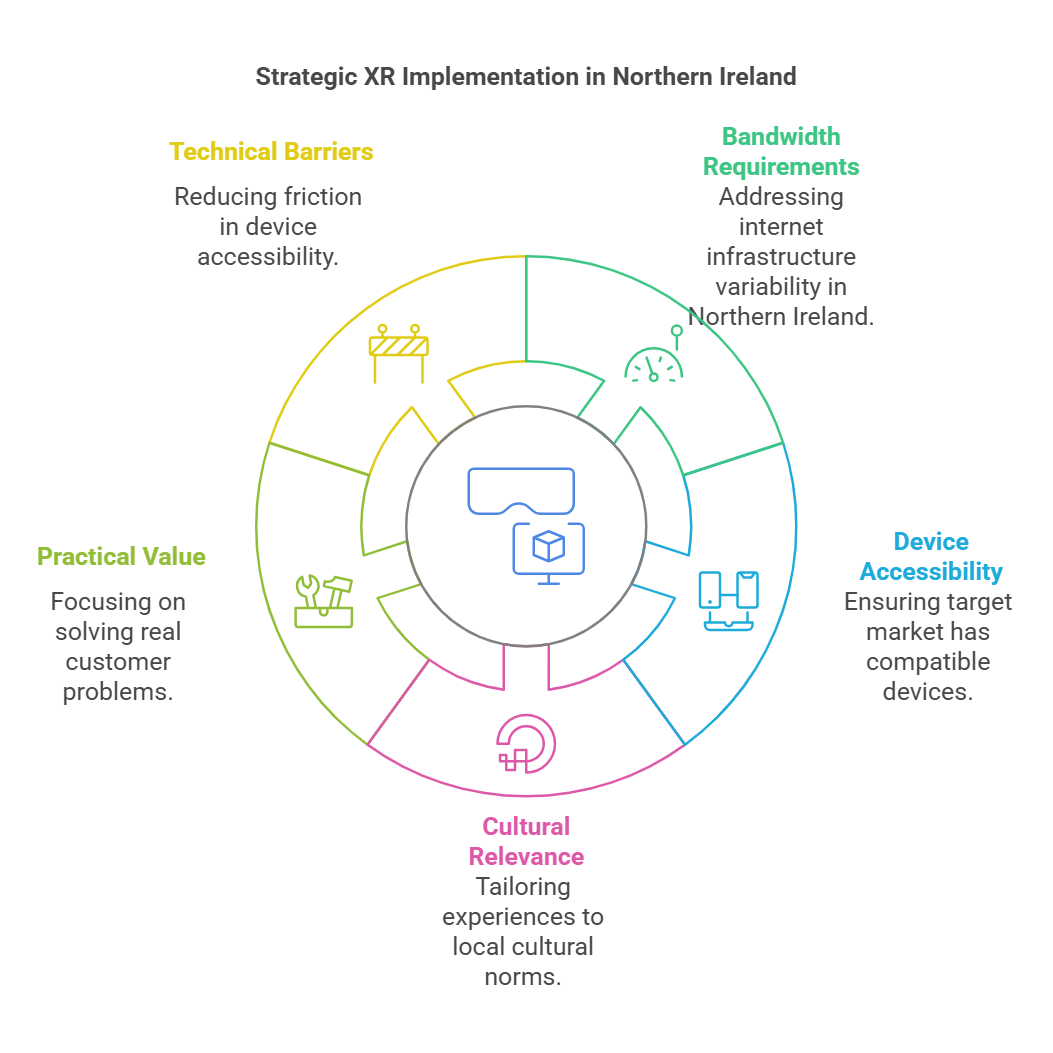
Augmented Reality Integration
AR is evolving from a novelty to a practical business application:
- Product Visualisation: Allow customers to see furniture, décor, or clothing in their own spaces
- Interactive Instructions: Provide visual guidance overlaid on physical products
- Location Enhancement: Add digital information layers to physical retail environments
- Virtual Try-On: Enable customers to test cosmetics, eyewear, or fashion items virtually
- Educational Experiences: Create immersive learning opportunities around products or services
Virtual Reality Applications
VR offers deeper immersive experiences for specific contexts:
- Virtual Showrooms: Create complete digital environments showcasing products or properties
- Experiential Marketing: Develop memorable brand experiences that transcend physical limitations
- Training Simulations: Build realistic scenarios for staff or customer education
- Event Previews: Offer virtual tours of venues or experiences before booking
- Conceptual Demonstration: Visualise complex ideas or future developments
Implementation Considerations for UK and Irish Markets
Approach XR strategically for regional business contexts:
- Bandwidth Requirements: Consider Northern Ireland’s varying internet infrastructure when designing XR experiences
- Device Accessibility: Understand the prevalence of compatible devices in your target market
- Cultural Relevance: Create experiences that resonate with local cultural references and expectations
- Practical Value: Focus on solutions that solve genuine customer problems rather than novelty
- Technical Barriers: Minimise friction by making experiences accessible through common devices
Regional Application Example: A Belfast-based property developer using virtual reality to allow potential buyers to experience new housing developments before construction is complete, reducing the need for physical site visits and show homes.
Hyper-Personalisation Through Advanced AI
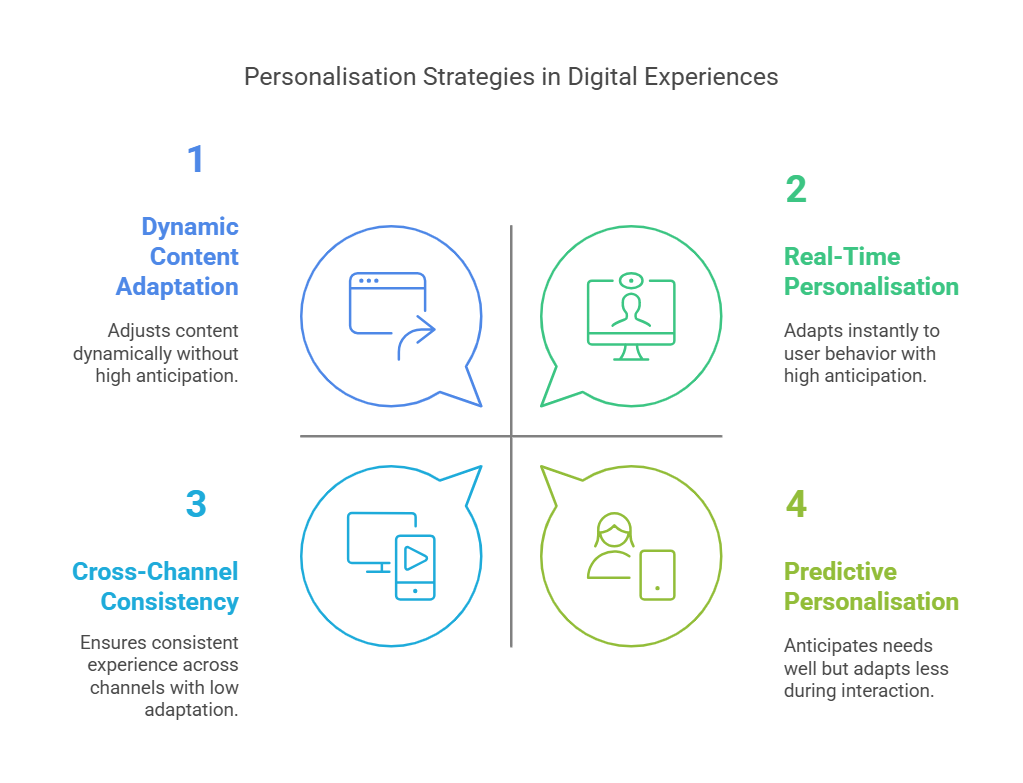
Beyond Basic Personalisation
AI enables increasingly sophisticated customisation:
- Predictive Personalisation: Anticipate needs based on behavioural patterns and contextual data
- Dynamic Content Adaptation: Automatically adjust website content to individual preferences
- Real-Time Personalisation: Modify experiences during the same session based on behaviour
- Cross-Channel Consistency: Maintain personalised experiences across multiple touchpoints
- Segment-of-One Marketing: Create uniquely tailored experiences for individual customers
Data-Driven Experience Enhancement
Leverage various data sources to inform personalisation:
- Behavioural Analytics: Track and analyse user interactions to identify patterns
- Contextual Information: Consider location, device, time, and environmental factors
- Purchase History: Recommend products based on previous buying behaviour
- Content Engagement: Track which topics, formats, and approaches resonate with each user
- Feedback Integration: Incorporate explicit preferences and feedback into personalisation models
Ethical Personalisation Frameworks
Balance effectiveness with responsibility:
- Transparency: Communicate how personalisation works and what data is used
- Control Mechanisms: Provide easy options to adjust or opt out of personalisation
- Data Minimisation: Collect only what’s necessary for meaningful improvements
- Privacy Compliance: Ensure adherence to UK GDPR and other relevant regulations
- Value Exchange: Deliver clear benefits that justify the use of personal data
UK Implementation Note: British consumers generally respond positively to personalisation when it provides genuine utility but are increasingly concerned about privacy. Transparent approaches that demonstrate value perform best in Northern Ireland and UK markets.
Ethical and Sustainable Digital Design
Growing Consumer Consciousness
Ethics and sustainability have become central concerns:
- Environmental Impact Awareness: Increasing recognition of digital carbon footprints
- Data Ethics Sensitivity: Growing concern about how personal information is used
- Inclusivity Expectations: Demand for experiences accessible to all abilities and backgrounds
- Value Alignment: Customer preference for brands whose values match their own
- Transparency Demands: Expectation for openness about business practices and policies
Sustainable UX Implementation
Reduce environmental impact through thoughtful design:
- Performance Optimisation: Create faster, more efficient digital experiences
- Energy-Efficient Design: Minimise battery drain and server resource requirements
- Streamlined User Journeys: Reduce unnecessary steps and digital waste
- Sustainable Hosting: Choose environmentally responsible hosting solutions
- Long-term Usability: Design for durability rather than constant replacement
Ethical Design Principles
Build experiences that respect and protect users:
- Accessibility Compliance: Ensure usability for people with disabilities (WCAG 2.1 AA standard minimum)
- Responsible Persuasion: Avoid dark patterns that manipulate or mislead
- Transparent Data Practices: Communicate data collection and usage
- Inclusive Representation: Ensure diverse representation in imagery and content
- Fair AI Implementation: Test for and address algorithmic bias
Northern Ireland Application: Belfast and Derry businesses can leverage their commitment to local communities and ethical practices as a competitive advantage, particularly when competing against larger international corporations.
Micro-interactions and Strategic Microcopy
The Power of Small Details
Subtle design elements create a significant impact:
- Interactive Feedback: Subtle animations confirming user actions
- State Changes: Visual cues indicating system status and progress
- Animated Transitions: Smooth movements between different states or pages
- Hover Effects: Responsive elements that react to cursor movement
- Loading Indicators: Creative ways to maintain engagement during processing
Effective Microcopy Development
Brief text elements that guide and delight:
- Button Text: Clear, action-oriented language that motivates clicks
- Form Labels: Concise, helpful guidance for user input
- Error Messages: Friendly, constructive feedback when issues occur
- Success Confirmations: Positive reinforcement for completed actions
- Tool Tips: Contextual help appearing at relevant moments
Implementation Strategy
Create coherent micro-elements that enhance the experience:
- Brand Personality Alignment: Ensure small interactions reflect your overall tone
- Consistent System: Develop a cohesive framework for micro-interactions across your digital presence
- Performance Consideration: Balance delight with technical efficiency
- User Testing: Verify that subtle elements enhance rather than distract
- Accessibility Integration: Ensure micro-interactions work with assistive technologies
UK Cultural Context: British users generally appreciate subtle humour and wit in microcopy but prefer understated rather than overly familiar or informal. Northern Ireland businesses can incorporate gentle regional character to create connection.
AI-Assisted Creative Collaboration
Evolution of Design Processes
AI is transforming how digital experiences are created:
- Collaborative Design Tools: AI systems that suggest layout and design improvements
- Content Generation Assistance: AI helps create initial content drafts for refinement
- Design System Automation: Tools that maintain consistency across complex digital ecosystems
- Visual Asset Creation: AI generating custom imagery and graphics based on parameters
- Code Generation: Systems that translate design concepts into functional code
Human-AI Partnership Models
Developing effective collaboration between designers and AI:
- Creative Direction: Humans provide vision and strategy, and AI handles the execution
- Iterative Refinement: AI generating options, humans selecting and customising
- Production Acceleration: AI handles repetitive tasks hand humans focus on innovation
- Quality Assurance: Humans reviewing and refining AI-generated outputs
- Continuous Learning: Systems improving based on designer feedback and preferences
Practical Business Applications
Leverage AI collaboration for tangible benefits:
- Rapid Prototyping: Generate multiple design concepts quickly for testing
- Personalisation at Scale: Create customised experiences for different segments efficiently
- Content Expansion: Develop more comprehensive information resources with AI assistance
- Multilingual Adaptation: Efficiently localise content for different markets
- Ongoing Optimisation: Continuously improve designs based on performance data
Implementation for Northern Ireland Businesses: Even smaller organisations in Belfast and throughout Northern Ireland can now access powerful AI design tools previously available only to large enterprises, creating opportunities to compete with larger brands on experience quality.
Seamless Omnichannel Integration
Beyond Multi-Channel Presence
Creating truly unified customer experiences:
- Consistent Identity: Maintaining coherent brand experience across all touchpoints
- Contextual Transitions: Enabling smooth movement between different channels
- Data Synchronisation: Sharing relevant information across platforms in real-time
- Journey Continuity: Allowing customers to resume processes across devices and channels
- Unified Measurement: Tracking complete customer journeys rather than isolated interactions
Key Integration Points
Critical connections for seamless experiences:
- Online to Offline: Bridging digital experiences with physical locations
- Mobile to Desktop: Ensuring consistent experiences across device types
- Social Media Integration: Connecting social platforms with owned digital properties
- Email Ecosystem Connection: Aligning email campaigns with website experiences
- Customer Service Channels: Integrating support systems with other touchpoints
Implementation Challenges and Solutions
Navigate common obstacles to omnichannel success:
- Technical Integration: Implementing systems that communicate effectively
- Data Unification: Creating a single customer view across channels
- Organisational Alignment: Breaking down internal silos between channel teams
- Consistent Governance: Establishing standards across the experience ecosystem
- Prioritisation Framework: Determining the most valuable connection points
Regional Consideration: For Northern Ireland businesses serving UK and Republic of Ireland customers, omnichannel approaches must consider cross-border shopping behaviours and potential differences in payment preferences, delivery expectations, and regulatory requirements.
Implementing Future-Focused Digital Experiences
Strategic Assessment Framework
Evaluate which trends align with your business objectives:
- Customer Relevance: Determine which innovations matter most to your specific audience
- Business Goal Alignment: Focus on trends that support your strategic priorities
- Implementation Feasibility: Assess your organisation’s capability to execute effectively
- Competitive Advantage: Identify opportunities for meaningful differentiation
- ROI Potential: Evaluate likely returns against required investment
Practical Implementation Approach
Move from concept to reality with a structured process:
- Prioritisation Matrix: Rank potential innovations based on impact and feasibility
- Pilot Testing: Start with small-scale implementations to validate assumptions
- Data-Driven Refinement: Use performance metrics to guide ongoing improvements
- Phased Rollout: Implement changes gradually to manage risk and resources
- Customer Feedback Loop: Continuously gather and incorporate user insights
Building Internal Capabilities
Develop the skills and resources needed for ongoing innovation:
- Team Training: Equip staff with relevant digital experience skills
- Technology Assessment: Evaluate current systems and identify necessary upgrades
- Partner Identification: Find specialist agencies or technology providers where needed
- Knowledge Management: Create systems to capture and share learnings
- Innovation Process: Establish structured approaches to exploring new opportunities
Case Study: Northern Ireland Retail Transformation
Business Context
A mid-sized Belfast retailer facing increasing competition from online-only businesses decided to revolutionise their customer experience:
Strategic Implementation
The company developed a phased approach to digital transformation:
Phase 1: Foundation Building
- Created a comprehensive customer data platform
- Implemented voice search optimisation for local discovery
- Developed a consistent design system across all digital touchpoints
- Established ethical data practices with transparent customer control
Phase 2: Experience Enhancement
- Introduced AR-based product visualisation for home furnishings
- Implemented personalised recommendations based on preferences and history
- Developed meaningful micro-interactions throughout the purchase journey
- Created locally relevant microcopy reflecting Northern Ireland culture
Phase 3: Advanced Integration
- Connected online browsing history with in-store digital displays
- Implemented AI-assisted design tools for custom product configuration
- Developed seamless cross-device shopping cart persistence
- Created voice-assistant capabilities for order status and support
Business Impact
The transformation yielded significant results:
- 38% increase in digital discovery through voice and zero-click optimisation
- 42% improvement in conversion rates with personalised experiences
- Substantial competitive differentiation through AR implementation
- Increased customer loyalty and higher average order values
- Positive media coverage highlighting innovation leadership in Northern Ireland retail
Balancing Innovation with Practical Value

These seven key trends will shape the future of digital customer experiences, but successful implementation requires thoughtful adaptation rather than simply chasing the latest technology. For businesses across Northern Ireland, Ireland, and the UK, the focus should remain on creating meaningful improvements that solve genuine customer problems and deliver tangible business results.
By strategically evaluating and implementing these innovations—voice and zero-click experiences, immersive XR, hyper-personalisation, ethical design, micro-interactions, AI collaboration, and omnichannel integration—organisations can create digital experiences that meet current expectations and anticipate future needs.
The most successful businesses will combine technological innovation with deep customer understanding, creating experiences that feel both advanced and authentically human. This balanced approach ensures that digital experiences enhance rather than replace the fundamental human connections that drive lasting business success.



